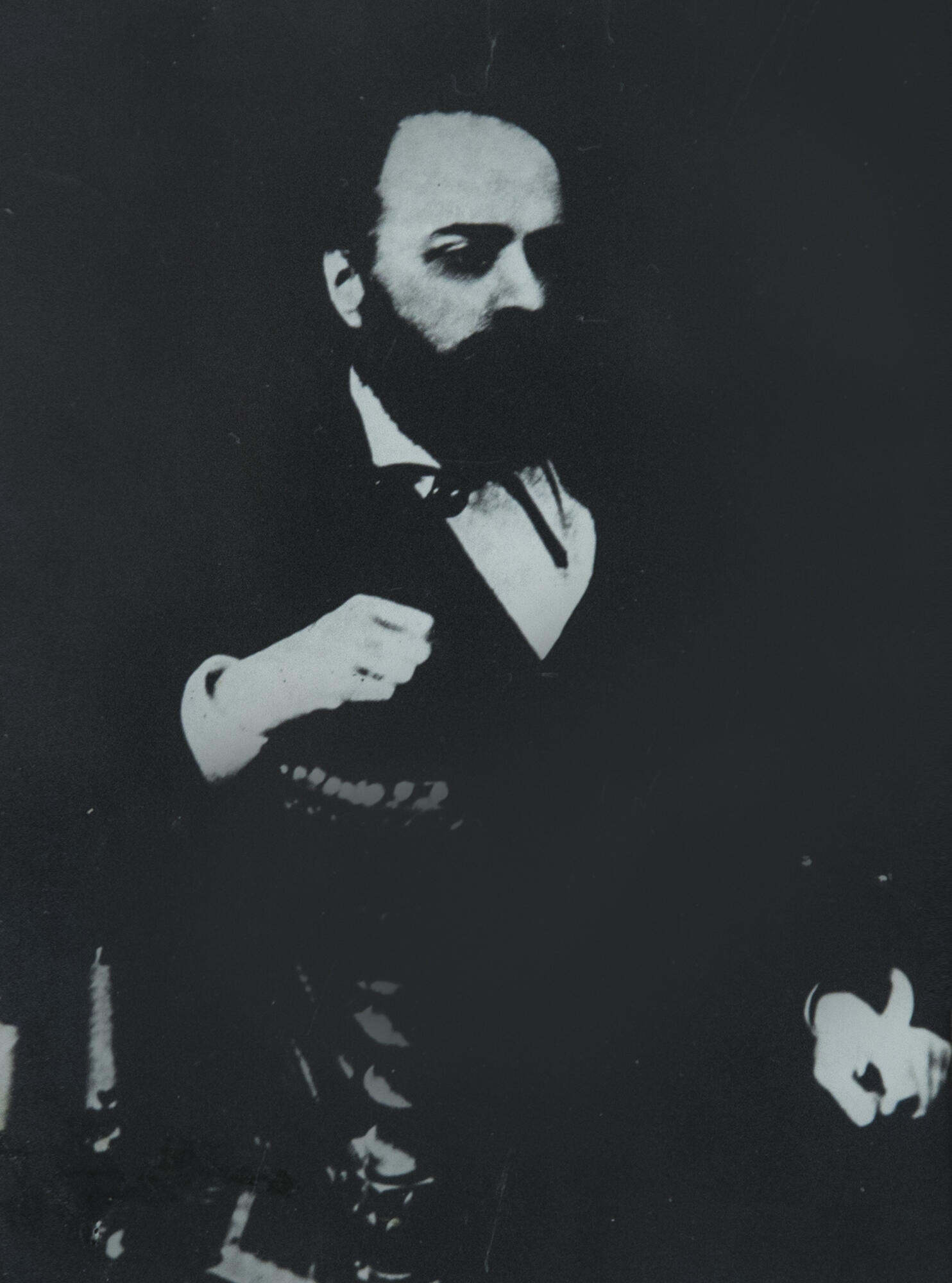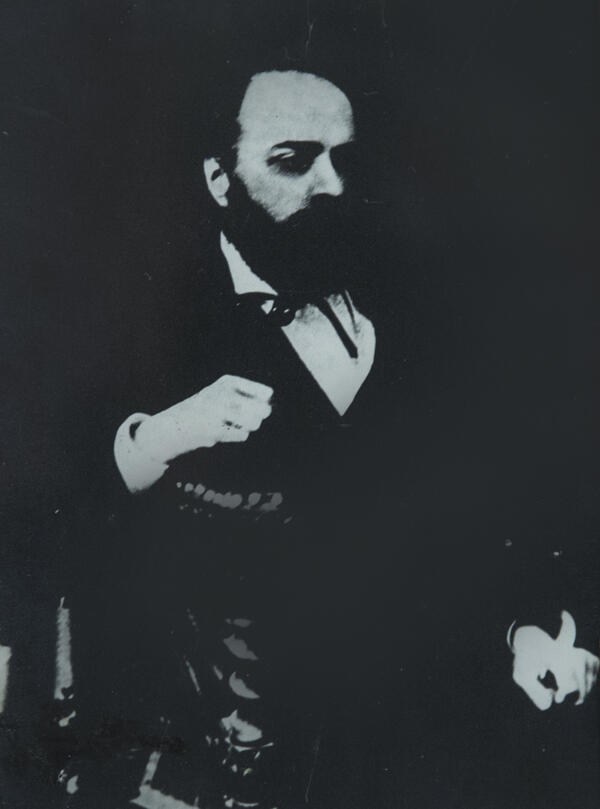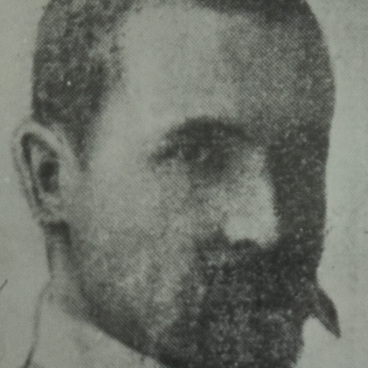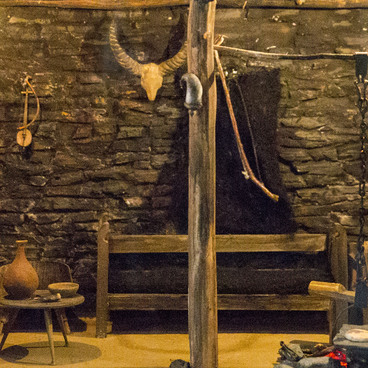Vasiliy Smirnov was born in the village of Gubachyovo, Uglich District, Yaroslavl Governorate. After graduating from a district religious academy, he went to study at the Yaroslavl Seminary.
Smirnov was interested in drawing since childhood, and in 1860 decided to take up painting professionally. He entered the Saint Petersburg Imperial Academy of arts. During his training, Vasiliy Ivanovich was twice awarded silver medals of the second and first degree for sketches of nature. After completing the course in September of 1870, he received a diploma ‘for the title of class artist of the third degree… for excellent success in painting with the assignment of the right to the rank of they XIV class’.
For several years after graduation from the academy, Smirnov remained a freelance artist without a permanent job. In 1873, he moved to Stavropol, where a vacancy was open for a teacher of drawing and drafting. Smirnov’s daughter Nina recalled: “According to my father, he was tempted by a regular monthly salary, free summer holidays, during which he dreamed of traveling around Russia and abroad. He wanted to see the beauty of the mountains, the sea, and the sun, but even this did not smile at him properly - he traveled for sketches several times, but only to the water”.
Smirnov began teaching at a realschule and at the Stavropol Classical Men’s Gymnasium. It was there that Vasiliy Ivanovich’s lessons were attended by Kosta Khetagurov, who later became not only one of the artist’s favorite students, but also a close friend of his family.
In 1881, Vasiliy Ivanovich married Sklyarevsky Anisya, the daughter of the collegiate assessor, and a year later the Smirnovy settled on Alexandrovskaya Street. They lived in a cozy three-window house with a basement, carved shutters, and an open gallery on wooden pillars. Near the house there was a well-kept garden with a well and a gazebo.
When guests arrived, Smirnov, a striking man with a gray curly beard, seated everyone in the living room, where there was soft, walnut furniture. The walls were decorated with paintings by the artist himself: ‘Lady With a Glove’, ‘Mountain Landscape’, ‘Two Italian Heads’, the watercolor ‘In the Forest’s Thicket’, and the landscapes “Tiflis” and “Elbrus”.
Smirnov was interested in drawing since childhood, and in 1860 decided to take up painting professionally. He entered the Saint Petersburg Imperial Academy of arts. During his training, Vasiliy Ivanovich was twice awarded silver medals of the second and first degree for sketches of nature. After completing the course in September of 1870, he received a diploma ‘for the title of class artist of the third degree… for excellent success in painting with the assignment of the right to the rank of they XIV class’.
For several years after graduation from the academy, Smirnov remained a freelance artist without a permanent job. In 1873, he moved to Stavropol, where a vacancy was open for a teacher of drawing and drafting. Smirnov’s daughter Nina recalled: “According to my father, he was tempted by a regular monthly salary, free summer holidays, during which he dreamed of traveling around Russia and abroad. He wanted to see the beauty of the mountains, the sea, and the sun, but even this did not smile at him properly - he traveled for sketches several times, but only to the water”.
Smirnov began teaching at a realschule and at the Stavropol Classical Men’s Gymnasium. It was there that Vasiliy Ivanovich’s lessons were attended by Kosta Khetagurov, who later became not only one of the artist’s favorite students, but also a close friend of his family.
In 1881, Vasiliy Ivanovich married Sklyarevsky Anisya, the daughter of the collegiate assessor, and a year later the Smirnovy settled on Alexandrovskaya Street. They lived in a cozy three-window house with a basement, carved shutters, and an open gallery on wooden pillars. Near the house there was a well-kept garden with a well and a gazebo.
When guests arrived, Smirnov, a striking man with a gray curly beard, seated everyone in the living room, where there was soft, walnut furniture. The walls were decorated with paintings by the artist himself: ‘Lady With a Glove’, ‘Mountain Landscape’, ‘Two Italian Heads’, the watercolor ‘In the Forest’s Thicket’, and the landscapes “Tiflis” and “Elbrus”.



